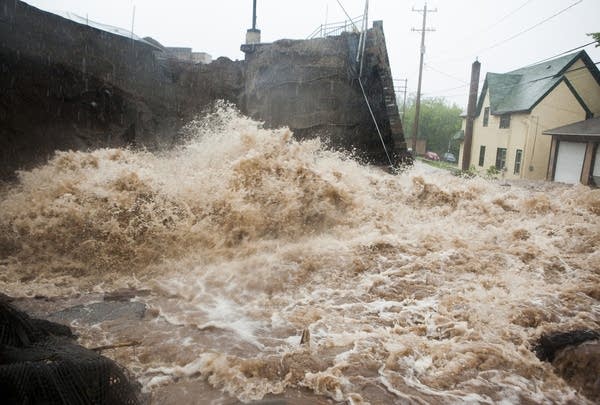Report: Climate change bringing more severe weather to Minn.

Brewery Creek burst through a retaining wall after heavy rains caused flooding in Duluth in June 2012.
Derek Montgomery for MPR
Go Deeper.
Create an account or log in to save stories.
Like this?
Thanks for liking this story! We have added it to a list of your favorite stories.


